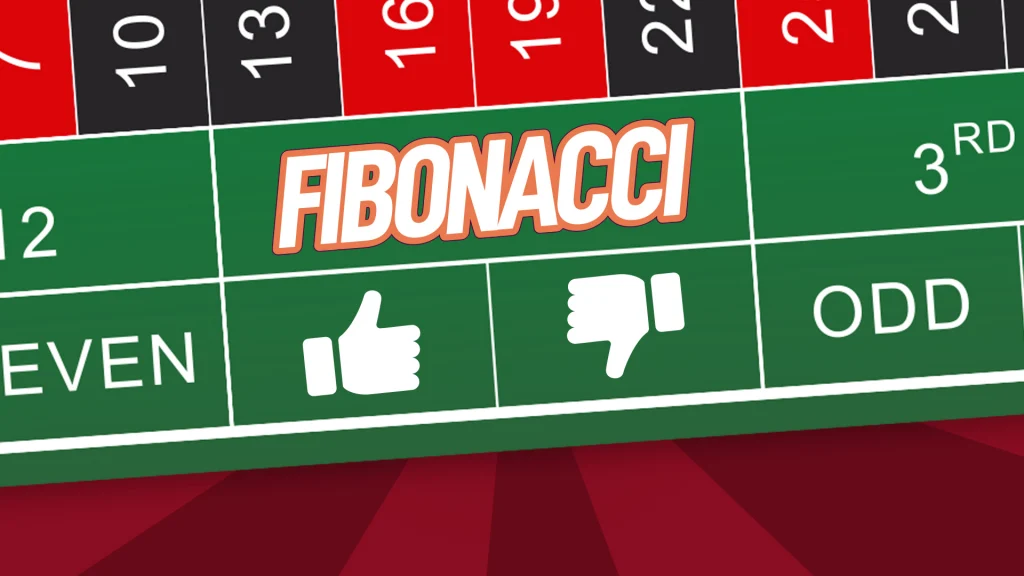Fibonacci Roulette Strategy: A Slow & Steady Comeback
Leonardo of Pisa, better known as Fibonacci, didn’t invent the sequence that bears his name (that honor belongs to ancient Indian mathematicians), but he did make it famous back in the 1200s while solving a rabbit breeding problem… as one does.
Centuries later, the sequence hopped from rabbit pens to roulette tables when gamblers realized this orderly set of numbers offers a unique system for managing your bets. Thus, the Fibonacci roulette strategy was born.
We’ll break down how Fibonacci betting works when you play roulette, and whether or not it’s worth using.
What is the Fibonacci sequence?
The Fibonacci sequence is a series of numbers where each new number is the sum of the two before it.
It goes: 0, 1, 1, 2, 3, 5, 8, 13, 21… and technically it never ends. You start with zero and one, add them together to get one, then continue by always adding the two most recent numbers to generate the next. That gives you a sequence where each step grows gradually at first, then more rapidly the further you go.
We see the Fibonacci sequence all around us in everyday life, like the swirl of sunflower seeds, the spiral of a seashell, the layout of pineapples, and, if you squint hard enough, in the growing laundry pile. One sock, then one shirt, then two towels, then three pairs of jeans… aaaand now you’re fibo-not-going-anywhere today.
And as we’re discussing here, we also see it in Fibonacci betting with roulette. In this case, you increase your bet after each loss by following the sequence, then move two steps back when you win.
Does Fibonacci work on roulette?

The Fibonacci strategy in roulette is a negative progression strategy, which means you increase your bet after a loss instead of after a win. When you finally do land a win, the idea is that the payout will cover most (or all) of your previous losses, depending on how deep into the sequence you’ve gone. But it doesn’t always work that way.
For instance, if you hit a rough patch and lose six spins in a row, your bets would stack up like this: $1, $1, $2, $3, $5, $8. That’s $20 out of your pocket before you even see a win. And if that win doesn’t come soon, the next bets jump to $13, then $21. That’s what historians call a Fibonacci face plant.
But if you’re going to use it, the Fibonacci strategy in roulette works best on even-money bets because those give you the closest thing to a 50/50 shot. You’re not trying to double your money in one spin. You’re trying to slowly chip away at losses with a manageable structure.
One of the best ways to test the Fibonacci sequence with roulette is to start your session with a Bitcoin casino no-deposit bonus. We are known for dropping them from time to time, say, every 1 day, 2, 3, 5, 8, and so on, and you can catch them on our socials. That’s no fib!…onacci.
The Fibonacci Strategy Betting Example
Roulette is a great place to use the Fibonacci sequence because it has multiple even-money bets, particularly on the European wheel, which are ideal for consistency. Those include red/black, odd/even, and high/low.
This is how it plays out.
- You roll up to the roulette table like a 13th-century scholar with rabbits on the mind. Okay, a hoodie-wearing millennial works, too. Either way, you start with a $1 bet on red.
NOTE: It’s essential that you start with a small bet, because you’ll be increasing after each loss.
- If you lose, you stay at $1 for your next bet, the next number in the Fibonacci sequence.
- If you lose this round, increase your bet to $2.
- After another loss, increase your bet according to the Fibonacci sequence, being $3, then $5 on your next loss, and so on. You’re only increasing your stake by the sum of the two previous amounts, which helps slow the climb a bit compared to more aggressive systems.
So what happens when you win? This is where the Fibonacci sequence for roulette differs the most from most other roulette strategies.
When you win, you don’t revert all the way to the beginning. You only step back two spots in the sequence. If you’re already near the start, like at bet $2 or $3, you reset. That way, you can more easily recover your bets without risking massive losses, especially if you’re playing roulette with a smaller bankroll. At least, theoretically.
For example, if you bet $1, lose, bet $1 again, lose, then $2, $3, $5 from losses, and finally win with $8, you’ve now covered everything you lost and made a tidy $4 profit. It starts small and grows big. Like a beard in quarantine.
Fibonacci System Pros and Cons

The Fibonacci strategy in roulette has earned its fan base by being an easy progression system that’s significantly less intense than some of its double-or-nothing cousins, such as Martingale and Labouchère. But just like any betting system, it comes with trade-offs.
Here’s what players tend to like about it:
- It grows slowly at first, so your bankroll doesn’t take a beating right away.
- The sequence is easy to memorize.
- Stepping back two spots after a win helps you recoup losses without resetting entirely.
- It feels more forgiving than Martingale, which can drain your bankroll or hit table limits fast.
That said, there are a few things to watch out for:
- It doesn’t actually change the odds. You’re still betting with the preset house edge.
- A long losing streak can still be costly, just more gradually.
- Table limits or a small bankroll can stop you before you complete the sequence.
- It’s not designed for long-term profit, just for structured short-term sessions.
- It doesn’t have a built-in stopping point, so you have to be strict with your bankroll limits.
Another smart roulette strategy is to arrive at the table with your bankroll already multiplying with a referral bonus. Fibonacci would be proud. Simply invite a friend to sign up at Cafe Casino, and in return, we’ll drop a cash bonus into your account to say thanks.
Reverse Fibonacci Method
The regular roulette Fibonacci strategy is designed to recover your losses. The reverse version flips that logic on its head. Instead of increasing your bet after a loss, you increase it after a win. Then, if you lose a spin, you move two steps backward in the sequence or reset if you’re already near the start.
This version appeals to players who prefer to ride a winning streak, like you do with the Paroli system, and maximize profits while the wheel is being kind. But with this roulette strategy, it’s a much riskier approach.
Since your wins are smaller early on and you only start betting big once you’re ahead, one bad spin can wipe out everything you’ve built up. You’ll need more consistent wins to make a meaningful profit, and the second things turn cold, the sequence drops you down again.
Try the Fibonacci roulette system if you’re working with a modest bankroll and want a slower, steadier way to recover losses without jumping to wild bets. Or if you’re also curious about the breeding habits of rabbits. They seem to go hand in hand. Then, make like a sunflower and follow the numbers in Real Play as you bloom into bigger, brighter wins.